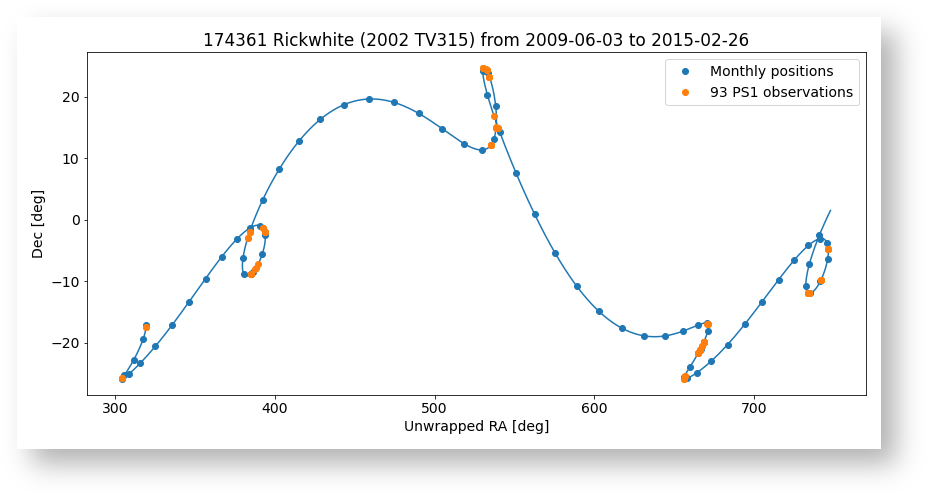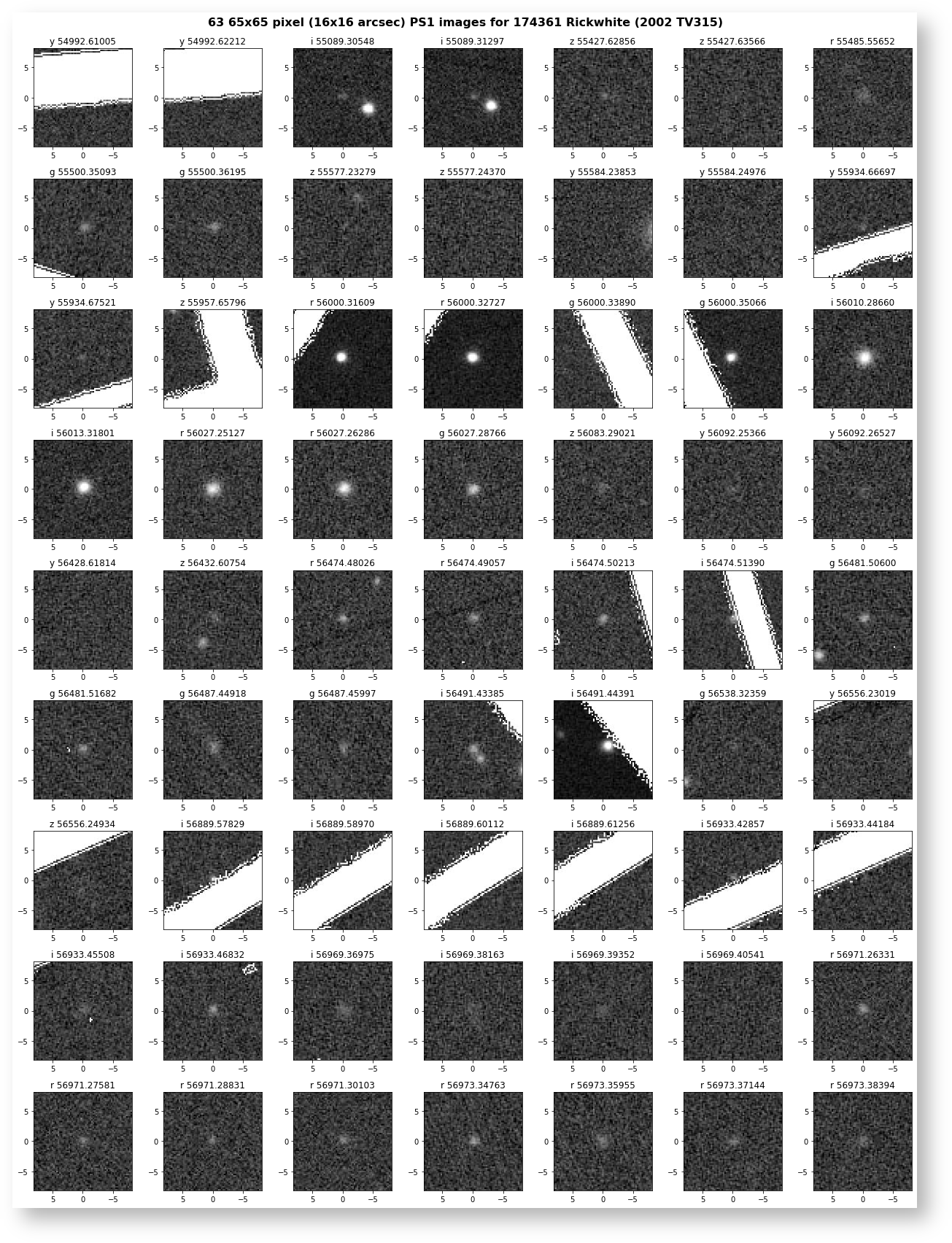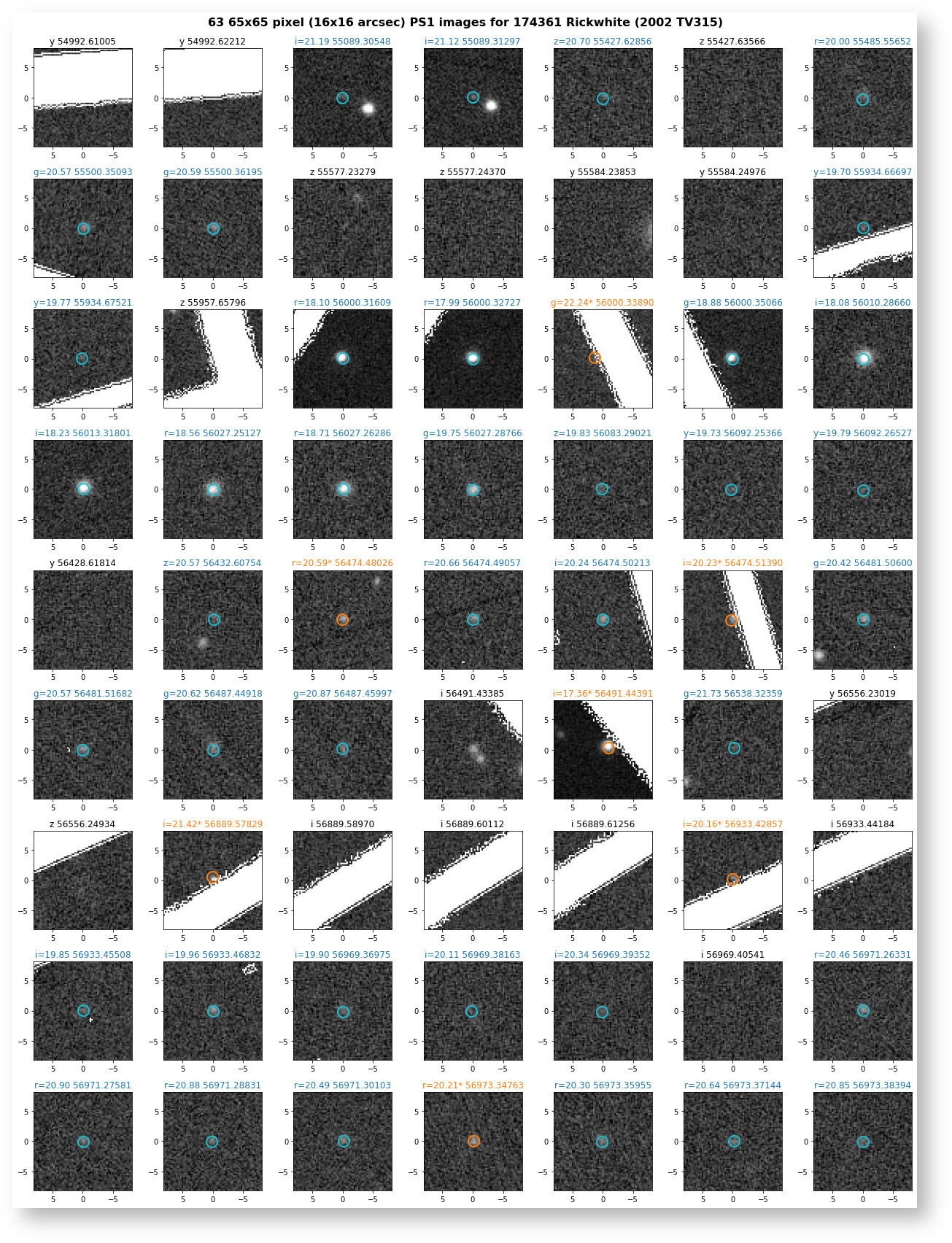Page History
...
Here are some plots from the notebook showing the results. The PS1 survey has typically 10 epochs for each of the five filters (grizy) spread over the 5 years of observing. Those images will randomly include a moving object if they happen to be pointing in the right direction. The number of images with data will vary from object to object, but about 50 epochs will be the expected average.
The notebook extracts the path the object followed during the PS1 survey (a period of about 5 years). Here is a plot of the path plus the positions of PS1 observations.
Here are the 63 images that include asteroid Rickwhite. These are 65x65 pixel cutouts (about 16x16 arcsec) centered on the ephemeris position. Some images fall in gaps between the chips, but for the other cases there is usually a faint object present at the expected location. The title on each plot gives the filter and MJD date for the observation.
Matching the list of object positions with the PS1 catalog finds 46 detections. Here is another plot of the images with the PS1 source position overplotted. Cases where there are bad pixels overlapping the object (as indicated by the psQfPerfect column) are marked in orange. Good measurements are marked in blue.
The third plot compares the positions from the PS1 catalog with the ephemeris positions from the JPL Horizons system. Again the objects with poorer quality data are plotted in orange. The 39 objects having good data agree very well with the predicted positions.
...



